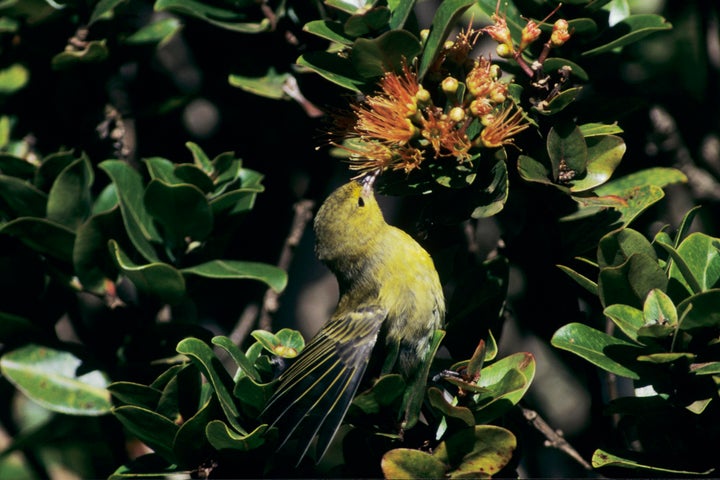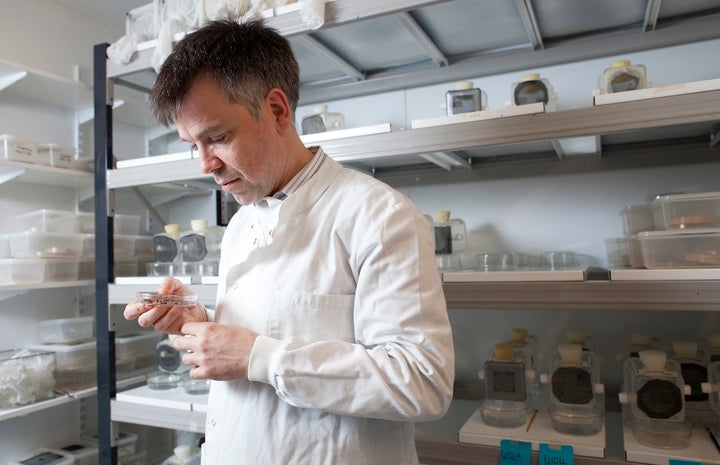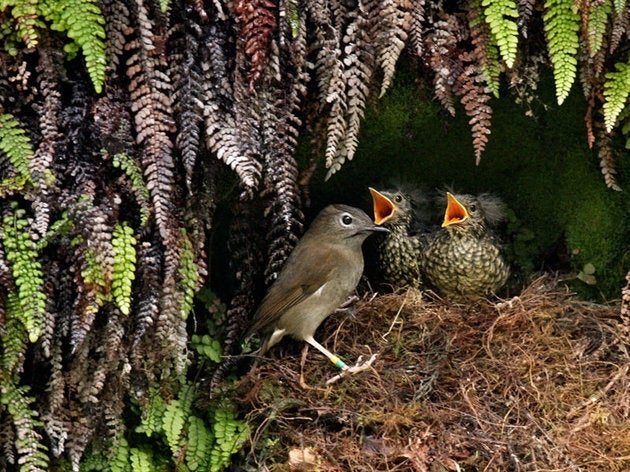HONOLULU -- A controversial proposal in Florida aims to keep the transmission of Zika, dengue and other mosquito-borne diseases at bay by releasing millions of genetically modified mosquitoes near Key West. But for several years now, scientists and government agencies in Hawaii, some 4,800 miles away, have been eyeing the technology for a much different purpose: saving what's left of the Aloha State's endangered birds from extinction.
"We've got this amazing treasure, birds found nowhere else in the world," Dr. Lisa Crampton, project leader of the Kauai Forest Bird Recovery Project, told The Huffington Post. "And it's our responsibility to take care of them."
Crampton said mosquito-borne diseases, specifically avian malaria, are among the biggest threats facing Hawaii's isolated bird species, and "we'd be remiss to at least not consider" all possible conservation measures, including genetic engineering.

Hawaii had no mosquitoes at all until 1826, when a foreign ship is believed to have brought them to the islands. Coupled with the destruction of native forest habitat and the introduction of alien species (like feral cats), mosquitoes have wreaked havoc on Hawaii's native birds.
Since human contact, 71 of Hawaii’s 113 endemic bird species have gone extinct, according to Hawaii Department of Land and Natural Resources. And of the 42 that remain, roughly 75 percent are listed as endangered species.
On Kauai, seven of the island’s original 13 forest birds have vanished, including five since the 1960s. Of the six left, three -- the ‘Akeke’e and ‘Akikiki, two species of honeycreepers, and the secretive Puaiohi, or Small Kauai Thrush -- have populations of fewer than 1,000. And if numbers alone didn't tell the story, a recent study predicts several remaining species could soon be wiped out by climate change and disease.
The situation has left the scientific and conservation communities scrambling.

Luke Alphey, a co-founder of British company Oxitec and the scientist who first genetically engineered a sterile strain of mosquito, learned about the issues facing Hawaii's birds several years ago.
He had previously developed Aedes aegypti male mosquitoes (the Zika-carrying strain) to produce offspring that quickly die off, thus significantly reducing an area's mosquito population.
Today, he's leading a group of researchers at the Pirbright Institute to develop prototype genetic strains of Culex quinquefasciatus, the mosquito species plaguing Hawaiian birds.
Alphey told HuffPost that his discussions with experts in Hawaii over the last several years have only increased his confidence that gene-altered mosquitoes would work.
"GM mosquitoes could provide a powerful control tool which, if used in a properly funded program with support from the public and relevant agencies, could -- in my view -- greatly mitigate the problem and yes, in short, save these rare birds," he said in an email.

Brent Lawrence, a spokesman for the U.S. Fish and Wildlife Service, told HuffPost in an email that the agency and its partners are "evaluating a wide range of control techniques" to protect native Hawaiian birds and ecosystems, and are "aware of the evolving technology on genetically modified mosquitoes." Any discussions prior to FDA approval in Florida, however, are "purely speculative and are very informal 'what ifs,'" he said.
And then there's the challenge of getting Hawaii on board -- a "difficult sell," according to Eben Paxton, an avian ecologist with the U.S. Geological Survey in Hawaii. The Aloha State has had a contentious relationship with GMO agriculture (a technology Alphey, Crampton and others say should not be compared to GM mosquitoes) and has also had difficulty executing similar population control plans.
As Crampton notes, the last thing Hawaii needs is another situation like the mongooses, which were intentionally introduced in Hawaii to control rats. Unfortunately, rats are nocturnal, so the mongooses spent their days preying not on their intended target, but on native bird populations.
If executed properly, however, Paxton says genetically engineered mosquitos could be the best -- and possibly the only -- way forward for Hawaii's rarest birds.
“This is an action to save these native species of birds,” he told HuffPost. “And without action there’s a reality that we might lose many of these species in the future.”

